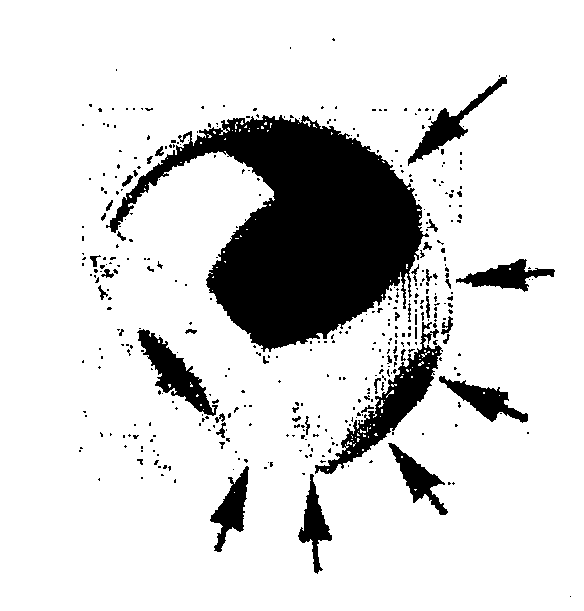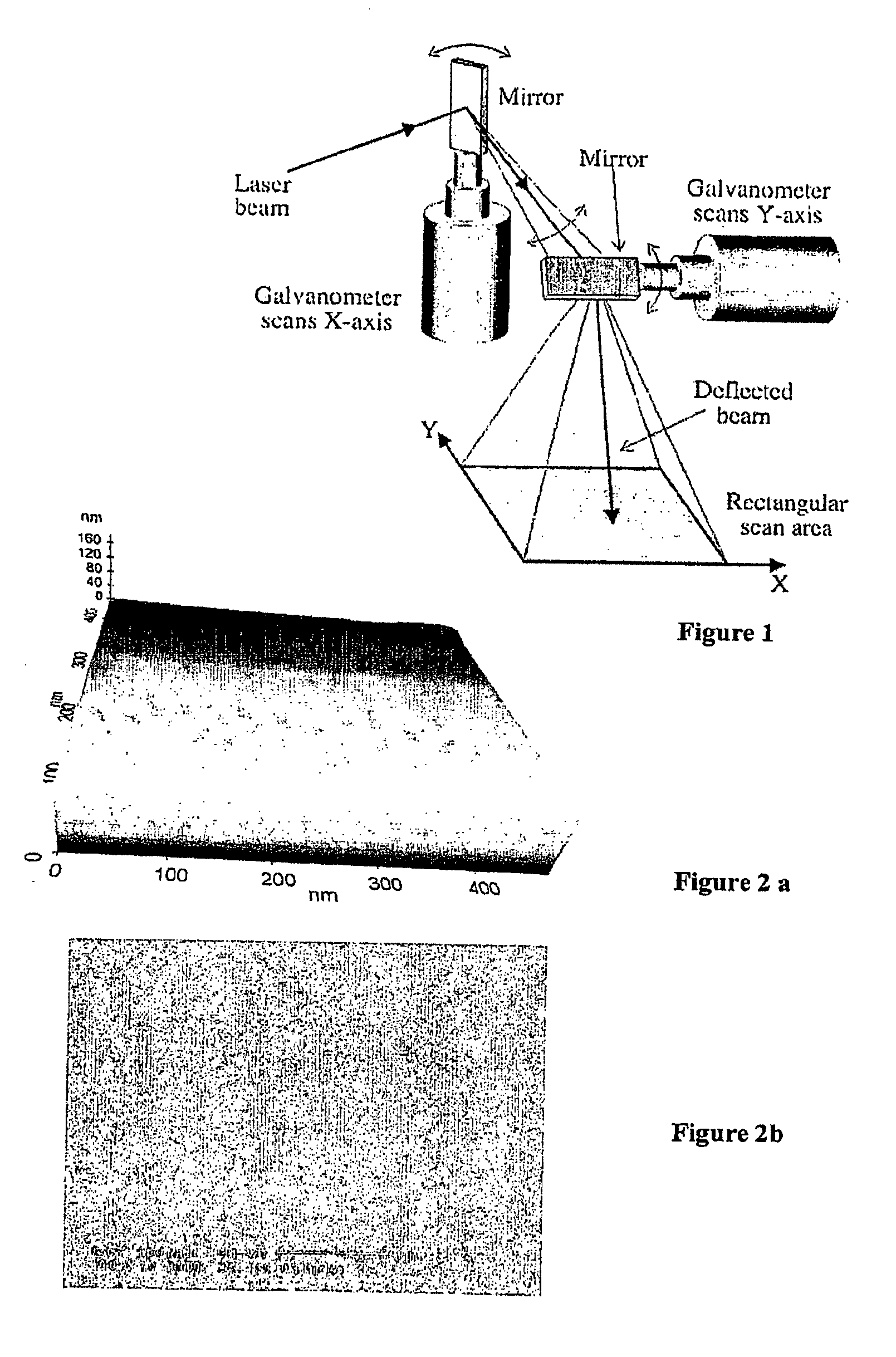Coating on a Medical Substrate and a Coated Medical Product
a medical substrate and coating technology, applied in the field of coating on the medical substrate and coating on the medical product, can solve the problems of large vacuum pumping period, time-consuming, high-volume vacuumed chamber, and inability to industrialize the coating of most of the present metal products, so as to reduce the torsional strength, enhance the properties, and increase the operation time
- Summary
- Abstract
- Description
- Claims
- Application Information
AI Technical Summary
Benefits of technology
Problems solved by technology
Method used
Image
Examples
example of invention — 1
Example of Invention—1
[0097]FIG. 14a demonstrates a target material ablated with pico-second-range pulsed laser employing rotating scanner with speed accomplishing the ablation of target material with slight overlapping of adjacent pulses, avoiding the problems associated with prior art galvano-scanners. FIG. 14b shows enlarged picture of one part of the ablated material, clearly demonstrating the smooth and controlled ablation of material on both x- and y-axis and thus, generation of high quality, particle-free plasma and further, high quality thin-films and coatings. FIG. 14c demonstrates one example of possible x- and y-dimensions of one single ablation spot achieved by one or few pulses. Here, it can be clearly seen, that the invention accomplishes the ablation of material in a manner wherein the width of the ablated spot is always much bigger than the depth of the ablated spot area. Theoretically, the possible particles (if they would be generated) could now have a maximum size...
example of invention — 2
Example of Invention—2
[0098]FIG. 15 demonstrates an example wherein coating is carried out by employing a pico-second USPLD-laser and scanning the laser pulses with turbine scanner. Here, the scanning speed is 30 m / s, the laser spot-width being 30 μm. In this example, there is an ⅓ overlapping between the adjacent pulses.
EXAMPLES OF INVENTION—COATED PRODUCTS
[0099]None of the prepared coating samples contained any pinholes due to deposition on examines surfaces of prepared coatings. Some of the samples were produced by employing state of the art galvano-scanners, some by employing rotating turbine scanner. When employing turbine scanner, pulse repetition rates exceeding 1 MHz could be employed.
example 1
Ceramic Coatings for Different Kind of Materials
[0100]Different kind of materials can be utilized in medical applications: metals, ceramics, polymers and composites. In this example, examples from different material groups were selected including silicon, Ta, Ti, stainless steel, CoCrMo, alumina, glass, polycarbonate, polyimide and polyethylene. Samples had a polished, nearly a mirror-line surface finish. They were washed with acetone and ethanol. The samples were loaded in a vacuum chamber and pumped down to a vacuum better than 10−4 mbar. Then they were coated with a ceramic coating using an ultra short pulse laser ablation. Fiber laser gave a 15-20 ps pulse with a frequency in range 1-4 MHz. A single pulse energy was varied in the range 0-5 μJ and the laser spot was focused by proper lenses in a diameter in the range 10-40 μm depending on the case. The ceramic target materials included titania, yttria stabilized zirconia (Y—ZrO2), yttria / alumina (YAG), alumina / titania (ATO), grap...
PUM
| Property | Measurement | Unit |
|---|---|---|
| frequency | aaaaa | aaaaa |
| thickness | aaaaa | aaaaa |
| thickness | aaaaa | aaaaa |
Abstract
Description
Claims
Application Information
 Login to View More
Login to View More - R&D
- Intellectual Property
- Life Sciences
- Materials
- Tech Scout
- Unparalleled Data Quality
- Higher Quality Content
- 60% Fewer Hallucinations
Browse by: Latest US Patents, China's latest patents, Technical Efficacy Thesaurus, Application Domain, Technology Topic, Popular Technical Reports.
© 2025 PatSnap. All rights reserved.Legal|Privacy policy|Modern Slavery Act Transparency Statement|Sitemap|About US| Contact US: help@patsnap.com



